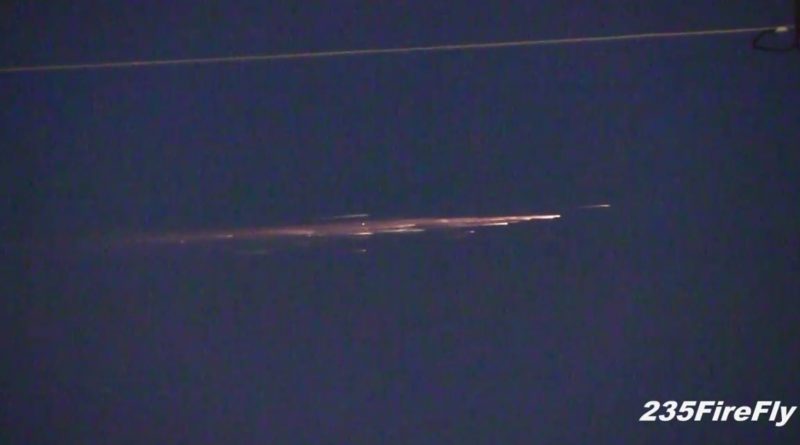Fiery Re-Entry of Soyuz Booster puts on Spectacular Show over Newfoundland
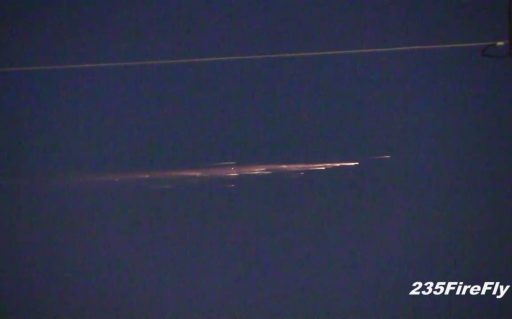
The spent rocket stage that delivered a crew of three to orbit earlier in the week put on a spectacular show for observers in North America on Thursday when slamming into Earth’s atmosphere and breaking apart in a bright fireball moving silently across the night sky. Reports from observers were posted on the Internet including photos and videos of the fiery demise of the Block I upper stage over Newfoundland, in accordance with re-entry data based on observations from space-based sensors.
Videos posted on the Internet show the typical appearance of a rocket body re-entering the atmosphere, leaving a visible trail of smoke and separating smaller debris as the parent object breaks apart. Observations of re-entering Soyuz stages have not been uncommon in recent years, and the Block I upper stage is in fact the most observed re-entry object, also owed to its frequent launch rate.
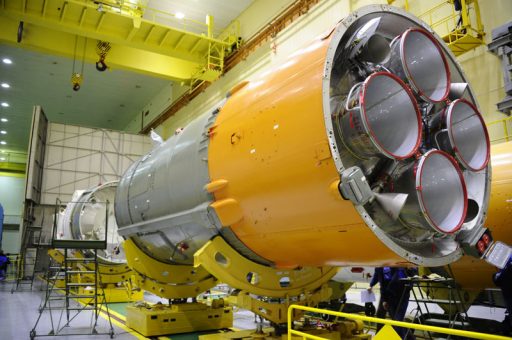
The Soyuz FG rocket carrying Yuri Malenchenko, Tim Kopra and Tim Peake into orbit for a seven-month stay on the International Space Station lifted off from the Baikonur Cosmodrome at 11:03 UTC on Tuesday. Beginning a six-hour chase of the Space Station, the Soyuz TMA-19M spacecraft received a smooth ride to orbit, though excitement later emerged when the spacecraft suffered a thruster issue and came close to a collision with ISS structure in the subsequent manual docking attempt before reaching its docking port at the Rassvet module.
The Block I upper stage of the Soyuz rocket entered an orbit just 200 Kilometers in altitude where it experienced the minute drag in the upper reaches of the atmosphere. Because spent rocket bodies have a low mass and relatively large surface area, their descent towards the dense layers of the atmosphere is relatively fast. Depending on atmospheric conditions, Block I stages typically re-enter two to three days after the launch of Soyuz or Progress spacecraft.
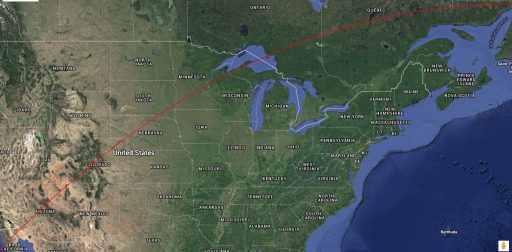
The exact speed of the orbital decay depends on the current state of the atmosphere which is known to expand and contract as a result of solar activity. Once hitting the dense atmosphere, the vehicle starts feeling the effects of re-entry and becomes visible from the ground.
In advance of its deep dive, the spent Soyuz rocket stage overflew the Pacific Ocean before crossing the coast over Baja California and then flying from south-west to north-east over Arizona, Colorado, Nebraska, South Dakota, Minnesota Wisconsin and Michigan. Heading out over Canada, the rocket body passed over Ontario, Quebec and then south of Newfoundland and Labrador and north of the Island of Newfoundland.
The onset of re-entry normally occurs between 120 and 100 Kilometers in altitude when the spacecraft encounters the dense layers of the atmosphere, initially not slowing down at a fast rate, but already interacting with plenty of molecules that are broken up into atoms and ions leading to plasma forming around the spacecraft which would normally become self-luminous around 104 Kilometers in altitude.
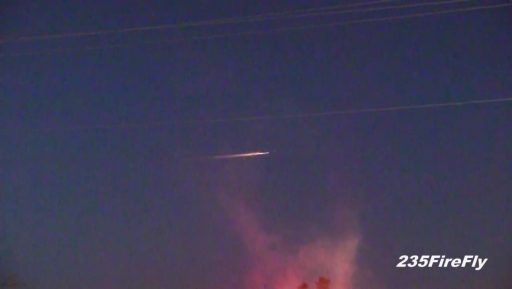
As the spacecraft re-enters, heat starts building on the vehicle and aerodynamic forces occurring at the high entry velocity cause the light propellant tank structures to break up soon into the entry process. Beak-up and disintegration of the vehicle usually occurs at around 80 Kilometers.
Most components of the disintegrating spacecraft burn up harmlessly in the atmosphere and never reach the ground, especially for rocket bodies that consist for a large part of thin metal that forms the propellant tanks.
However, dense components such as pressurant tanks and engine components can survive re-entry and reach the ground. The third stage of the Soyuz is 2.66 meters in diameter and 6.74 meters long with an empty mass of 2,410 Kilograms featuring a single RD-0110 engine with four chambers. During the ascent, the stage provided a thrust of 30 metric ton force over the course of a 4-minute burn to push its payload into orbit.
The Joint Space Operations Center monitors the re-entry of objects through the use of ground and space-based sensors that can detect the infrared signature of re-entering objects, making it possible to precisely determine the timing and location of orbital decay – at least for sizeable objects like the Soyuz third stage.
Space Surveillance Data places re-entry (=the object passing 80km in altitude) at 20:29 UTC on December 17 +/-1 Minute. The location of the center of this two-minute re-entry window is at 298°E 52°N, near the northernmost point of the orbit of the rocket stage.
Decay Point & Observer Locations
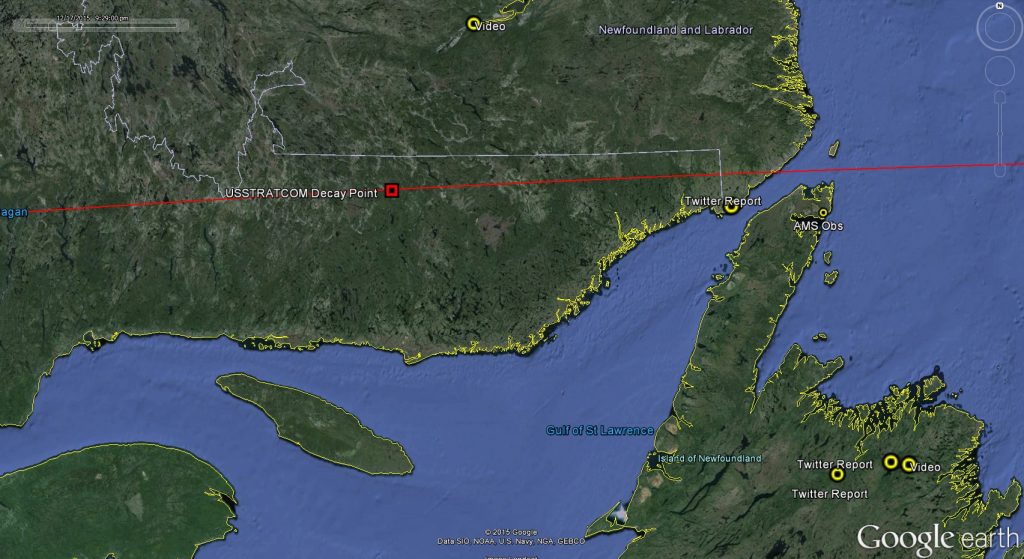
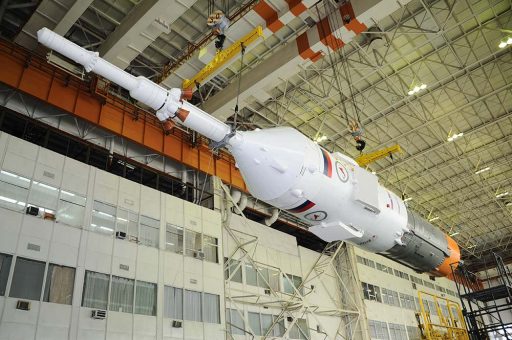
Observer reports came in from a number of locations from the Island of Newfoundland and as far north as Muskrat Falls where a video of the event was recorded by Jamie Hickey, uploaded to YouTube by meteorologist Eddie Sheerr (bottom of this page). Another video came from Gander, south of the track on the Island of Newfoundland.
The videos show the typical appearance of a re-entering rocket body – initially as a bright single object with a visible trail before the onset of disintegration visible as smaller objects separate from the parent body with their own trails. What is clearly visible is one bright object pulling out in front of the smaller debris, likely the heavy engine section with the 408-Kilogram RD-0110 four-chamber engine.
Dense components of satellites usually impact 800 to 1,300 Kilometers downrange from the Orbital Decay Point. Their journey back to Earth is strongly influenced by atmospheric properties like crosswinds that play a major role during atmospheric descent. Based on the decay point issued by JSpOC and the location of observers, it is very certain that any surviving debris landed in the Atlantic Ocean, well off the coast after creating a spectacular display for those who were lucky enough to look up at the right time.
>>Ted Molczan provided Visualizations of the Block I Entry Trajectory
Soyuz rocket stage re-entries have been observed relatively frequently, given the launcher’s fast-paced launch rate and the fact that many Block I stages end up in low-orbits with a rapid decay. Most recently, the spent stage from the launch of Soyuz TMA-17M was seen re-entering over French Polynesia in July. The Block I stage from the TMA-16M launch was seen burning up over Japan in March, the TMA-15M stage overflew Central Europe when re-entering in November 2014, a modified Block I stage that lofted the Meteor M2 weather satellite met its fiery end over Australia in July 2014, and the boosters of the Progress M-18M and Soyuz TMA-03M missions put on a show for Germany and surrounding countries in 2013 and 2011.
Re-Entry Data
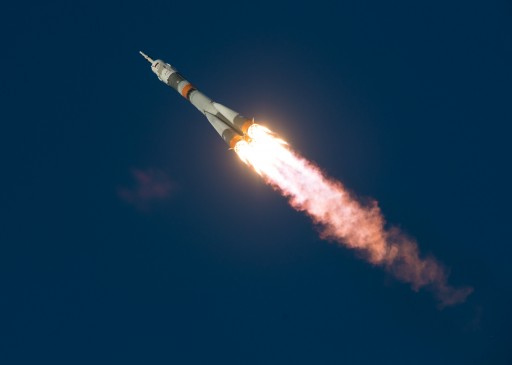
NORAD ID: 41125
Object: SL-4 R/B
Origin: Russia
Type: Block I Soyuz Upper Stage
Mass: 2,410 Kilograms
Launch: December 15, 2015 – 11:03:09 UTC
Launch Site: 1/5 Baikonur Cosmodrome
Launch Vehicle: Soyuz FG
Ascent Duration: 8 Minutes & 48 Seconds
Payload: Soyuz TMA-19M (7,220kg)
Target Orbit: 193 by 238km, 51.67°
Last Orbit Data: 133 by 139km, 51.61°(Epoch: 18:41, Dec. 17)
Orbital Lifetime: 40 Orbits
Re-Entry Prediction: December 17, 2015 – 20:29 UTC +/-1 Minute
Re-Entry Location: Quebec, Canada

